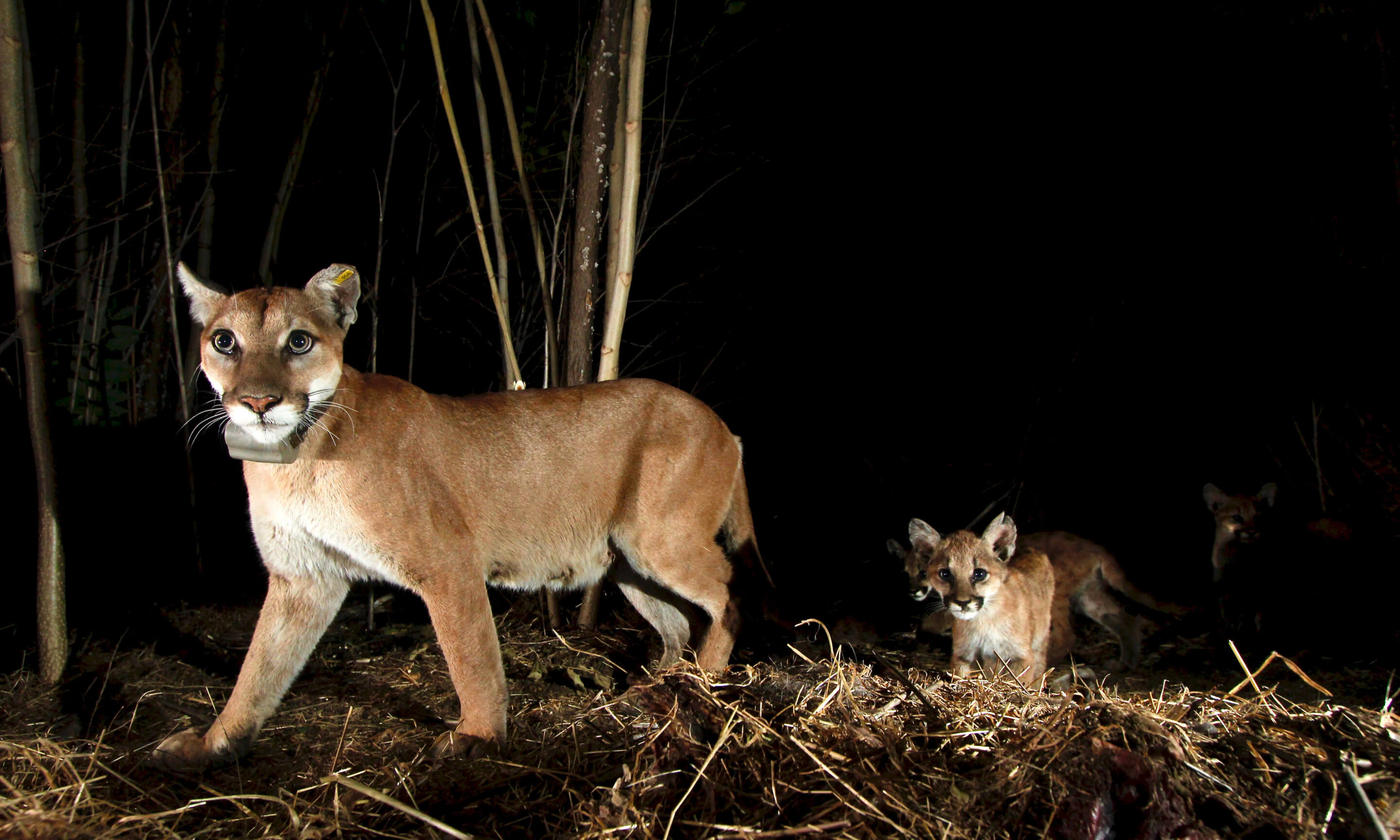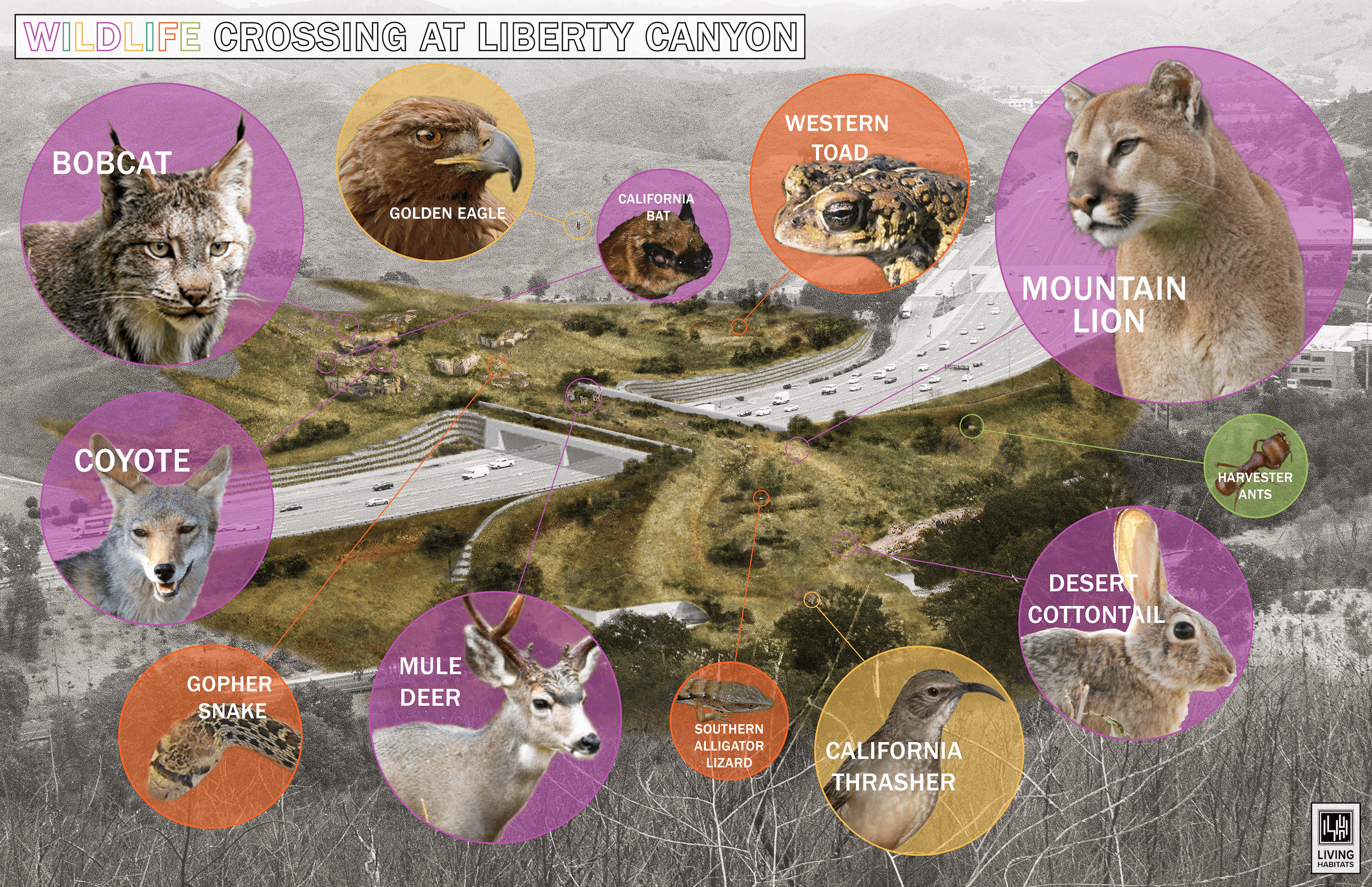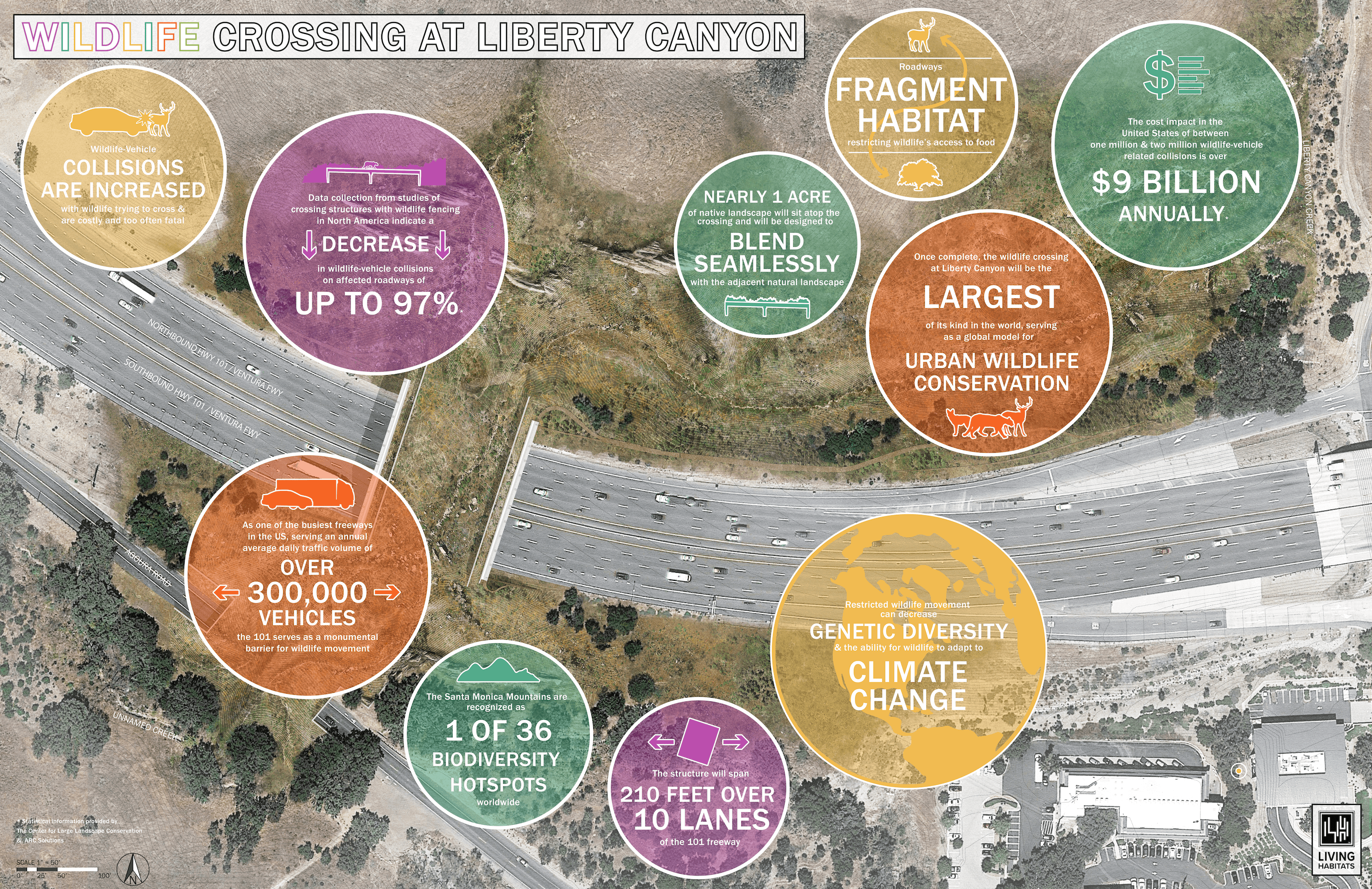In California’s Liberty Canyon, just west of Los Angeles, Interstate 101 serves as both a vital connector and an impenetrable barrier. For 300,000 motorists each day, the thruway stitches Agoura Hills, Thousand Oaks, and Hidden Valley with Calabasas and the rest of LA County. For the mountain lions who roam the Santa Monica mountain range along the Pacific coast, the freeway’s ten lanes present an existential threat.
With Southern California’s suburban and exurban sprawl continuing to expand into the far reaches of the county’s canyons and hillsides, natural habitats for a variety of wild animals have fragmented and shrunk dramatically over the course of several decades. The 101, as well as the encroachment of suburban tract developments, physically sever the Santa Monica range from the smaller Simi Hills and Santa Susana ranges to the north, preventing local cougar populations from intermixing and reproducing at a sustainable rate.

With gene flow across the 101 virtually impossible, the mountain lions to the south of the freeway are facing the very real threat (16 percent to 28 percent, according to some studies) of extinction within the next 50 years. According to the Los Angeles Times, among the dozen cougars that live in the Santa Monica range, biologists have already detected certain deformities that often accompany inbreeding, including kinked tails.
The potentially rapid spread of disease, territorial battles, increasingly frequent wildfires, and poisoning from rodenticide have only augmented the fragility of the isolated populations. There is also the more direct danger posed by high-speed car collisions with animals; since 2002, biologists with the National Park Service have confirmed 17 car-related cougar deaths in the Santa Monica range. The disappearance of predators like the mountain lions could be detrimental to the health of local ecosystems as a whole, particularly as animals lower on the food chain multiply uncontrollably.

For landscape architect Robert Rock, principal of the Chicago-based firm Living Habitats, Liberty Canyon presented a unique set of challenges with a promising reward. Local conservation groups and government officials have tapped Rock to design a massive wildlife crossing, possibly the largest in the world by the time of its completion and the closest to any major city, that would enable animals to cross freely between the Simi Hills and the coastal mountain ranges to the south.
Building a bridge over an active 10-lane freeway is never a straightforward process, and the Liberty Canyon project is made especially difficult by the area’s steep slopes and dry, rocky surfaces. The proposed crossing is 200 feet long and 165 feet wide, with design features that would minimize the impact of road noise and headlights on its animal users.
In addition to light deflectors and sound dampening walls, the bridge will feature its own irrigation system, native plants and trees, and abutments that could serve as habitats for smaller birds, mammals, and insects. A continuous 12-foot-tall fence will stretch for miles in either direction from the overpass, funneling animals to the point where it is safe to cross.

With a total price tag of $87 million, the Liberty Canyon Wildlife Crossing is no small undertaking. According to the LA Times, the National Wildlife Federation must raise $65 million in order to begin construction on time this November. The organization has already received $38 million in commitments from over 3,000 donors, including a $25 million challenge grant from the LA-based Annenberg Foundation. With $27 million to go, fundraisers are appealing to private citizens, philanthropic organizations, and corporations around the world.
While the California Department of Transportation will not provide any of the funding necessary for the project, the agency will oversee its design and construction. Caltrans, the National Wildlife Federation, the National Park Service, Living Habitats, and other stakeholders hope to finish the bridge by 2025. If other similar wildlife crossing projects are any evidence, animals could be using the overpass even before it is complete.











